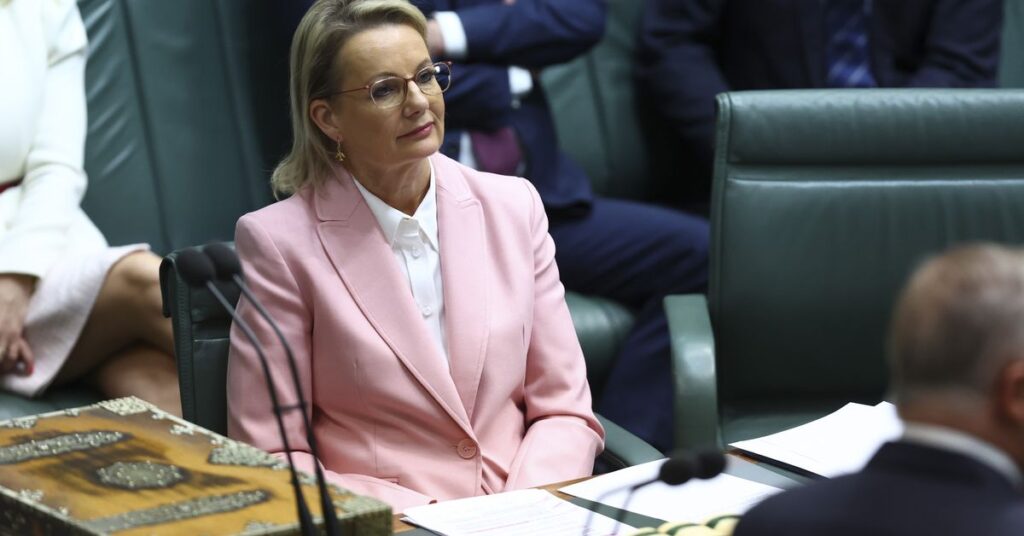
While the Coalition’s internal strife has been laid bare for the public, leading to a decline in the polls, an often-overlooked minor party has quietly gained traction. This surge in support is attributed to a “laser-focused” agenda that resonates with voters dissatisfied with the current political landscape.
The latest Resolve poll for Nine’s newspapers revealed that the Coalition managed a modest two percent increase in the primary vote, recovering slightly from a low of 27 percent in September. In contrast, One Nation has maintained a steady 12 percent, marking its highest support level since the federal election.
According to Resolve’s Jim Reed, the shift in voter allegiance from the Coalition to One Nation is largely due to Opposition Leader Sussan Ley’s perceived failure to address fundamental issues. Weeks of infighting over net-zero policies and Nationals MP Barnaby Joyce’s open consideration of defecting to One Nation have further exacerbated the Coalition’s challenges.
“The Coalition are viewed as disunited and focused on themselves, so they’ve got to get their house in order in terms of leadership and unity, competence in prosecuting a case against Labor and having an alternative policy suite,” Reed explained to 9news.com.au.
One Nation’s Strategic Gains
One Nation’s rise in popularity is largely attributed to its strategic focus on key issues like immigration and energy policy, areas where they are perceived to be effectively challenging the government’s stance. This focus has allowed them to present a distinct path that appeals to a segment of the electorate looking for alternatives to the major parties.
The Coalition’s inability to reach a consensus on critical issues has led to questions about Ley’s leadership, with speculation about a potential challenge from Angus Taylor. Meanwhile, Barnaby Joyce’s potential defection to One Nation, citing policy differences and opposition to net-zero commitments, could further shift voter support.
Changing Political Dynamics
Monash University’s Associate Professor Zareh Ghazarian notes that the current political climate is increasingly favorable to minor parties and independents, as voters become more open to alternatives amidst perceived disunity within major parties.
“The Liberal Party seems to be really struggling with what it wants to be in Australian politics,” Ghazarian observed. “You’ve got other parties, for example, like One Nation, which I think has become more prominent because they’ve got a very laser-focused policy agenda, and people know what that party is seeking to achieve in a policy sense.”
Historically, analysts have noted a gradual shift in voter sentiment away from major parties towards minor parties and independents. This trend is evident in the Senate, where minor parties and independents hold 20 seats, closely trailing the Coalition’s 27 and Labor’s 29. The House of Representatives presents a different picture, with Labor holding a commanding majority, yet 10 independents retained their seats in the recent federal election.
Implications for Major Parties
The growing support for minor parties and independents serves as a cautionary tale for the major parties. Ghazarian emphasizes the need for major parties to work diligently to maintain and expand their support base.
“There is fragility. There is a bit of brittleness within the party system and within the electoral system, as in voter preferences,” he said. “And it is a warning to the major parties that they must work very hard to maintain the support that they have and to potentially build on it. Otherwise, we’re seeing that voters are very happy to support non-major party candidates.”
Despite the gains made by minor parties, Jim Reed warns that the major parties still command the majority of the primary vote, with Labor at 33 percent and the Coalition at 29 percent. This underscores the importance of the center ground in determining electoral outcomes.
“We’ve got to remember that One Nation is still very much a minor party and that the likes of Hanson and Joyce are still not well-liked, but they are effectively appealing to a minority and making gains because of that,” Reed noted.
As the political landscape continues to evolve, the major parties face the challenge of addressing internal divisions and presenting cohesive policy platforms to retain voter confidence. Meanwhile, minor parties like One Nation are capitalizing on these opportunities to expand their influence, reshaping the dynamics of Australian politics.







